Explore Myanmar's Towns
Discover the diverse cities and towns of Myanmar, each offering unique cultural experiences, historical landmarks, and culinary delights. From bustling metropolises to serene hill stations, find your next destination here.
Top Cities in Myanmar
Discover the vibrant culture and rich heritage of Myanmar's major cities
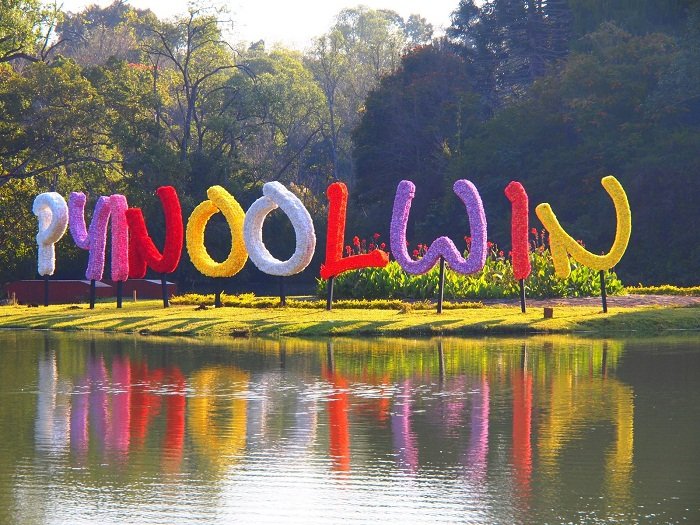
Pyin Oo Lwin
Pyin Oo Lwin, once known as Maymyo during the British colonial era, is a charming hill town just east of Mandalay that still reflects its colonial roots. Founded as a summer retreat for the British in the late 19th century, it became famous for its cool climate, pine forests, and colorful flower gardens. The town is dotted with colonial-style houses, horse-drawn carriages, and Christian churches that preserve its old-world charm. Today, Pyin Oo Lwin is celebrated for its sprawling National Kandawgyi Botanical Gardens, coffee plantations, and nearby waterfalls such as Anisakan and Pwe Kauk, making it a refreshing escape from the heat of the plains. With its blend of history, natural beauty, and cultural diversity, Pyin Oo Lwin stands as a serene retreat where the past gracefully meets the present.

Nay Pyi Daw
Nay Pyi Taw, officially declared the capital of Myanmar in 2005, is a city that represents the nation’s modern chapter while standing apart from the historical capitals like Mandalay and Yangon. Purpose-built with a vision of order and progress, it is laid out in wide, organized zones that include residential areas, government districts, and business centers. The city’s vast highways, sometimes wide enough to fit more than a dozen lanes, have become one of its most striking and unique features. At its heart stands the Uppatasanti Pagoda, a graceful replica of Yangon’s Shwedagon Pagoda, symbolizing spiritual continuity in a modern setting. Nay Pyi Taw also houses the grand Parliament Complex and impressive ministerial buildings, highlighting its role as the administrative hub of the country. Beyond politics, the city offers family-friendly attractions such as the Nay Pyi Taw Zoological Gardens, Safari Park, and the National Museum, which showcases Myanmar’s rich cultural heritage. With its spacious parks, hotels, and conference centers, the city has also become a growing venue for international events and summits. Though still young compared to other cities, Nay Pyi Taw reflects Myanmar’s aspirations for the future while offering visitors a glimpse into its evolving identity.
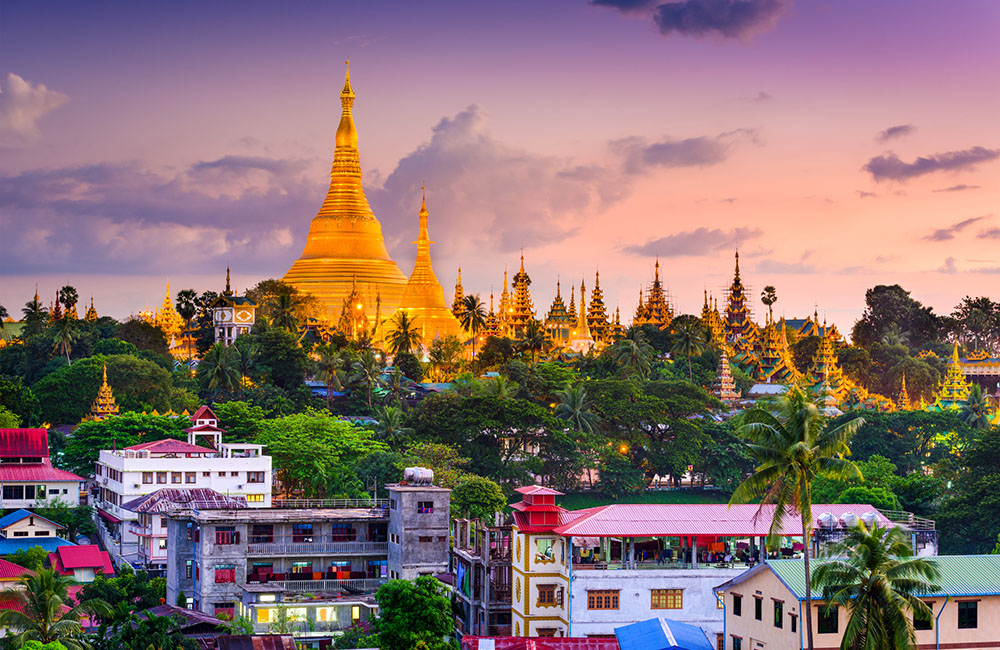
Yangon
Yangon, the former capital and the largest city of Myanmar, stands as a vibrant and dynamic metropolis that reflects the country’s cultural and historical richness. The city is known for its unique blend of colonial-era architecture, modern developments, and traditional influences, which create a striking urban landscape. Its bustling street markets offer an authentic glimpse into local life, with colorful stalls selling fresh produce, handmade crafts, and traditional snacks. Tranquil lakes and green parks provide refreshing escapes from the busy streets, adding to the city’s charm. At the heart of Yangon’s identity is its spiritual heritage, highlighted by the magnificent Shwedagon Pagoda, a golden stupa that rises majestically over the skyline and serves as one of the most sacred Buddhist sites in the world. Beyond its religious landmarks, Yangon presents a rich tapestry of cultures shaped by diverse communities, offering visitors the chance to explore an array of cuisines, from traditional Burmese dishes to international flavors. The city also boasts a lively arts and cultural scene, with galleries, theaters, and music events that showcase Myanmar’s evolving creativity.
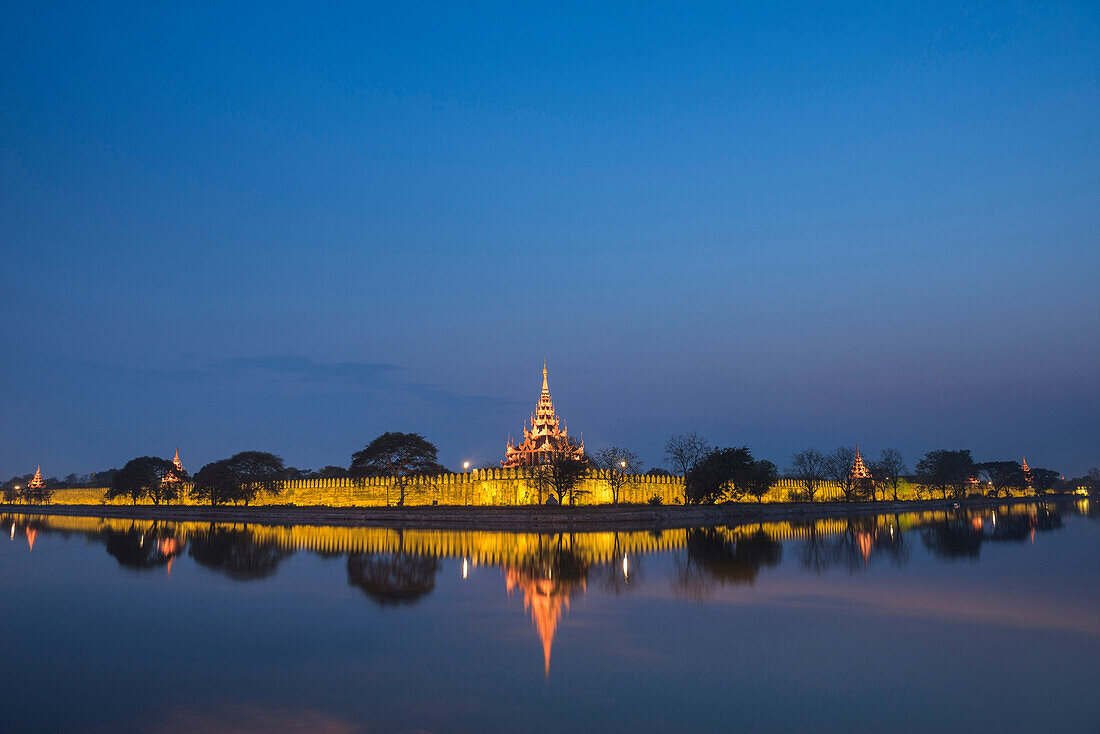
Mandalay
Mandalay, the last royal capital of Myanmar founded in 1857 by King Mindon, is a city that carries the essence of history while embracing the pulse of modern life. Once centered around the majestic Mandalay Palace, the city still reflects the grandeur of its royal past, even though much of the palace was lost during World War II. At its heart lies the sacred Mahamuni Pagoda, home to one of the most venerated Buddha images in the country, attracting pilgrims and travelers alike. The city is also famed for its artisans who continue to practice age-old crafts such as gold leaf making, wood carving, and silk weaving, keeping traditions alive through generations. Rising above the landscape, Mandalay Hill offers sweeping views of the Irrawaddy River and golden sunsets that captivate every visitor. Beyond its historic charm, Mandalay bustles with local markets, monasteries, and a vibrant daily rhythm, making it a unique blend of spiritual heritage, cultural treasures, and urban energy.

Bagan
Bagan, the ancient city of over 2,000 surviving temples and pagodas, stands as Myanmar’s most iconic archaeological treasure and a timeless symbol of its spiritual heritage. Flourishing as the capital of the Pagan Kingdom from the 9th to the 13th century, it was once home to more than 10,000 Buddhist structures, built under the devotion of kings and artisans who shaped the golden era of Myanmar’s history. Today, Bagan is recognized as a UNESCO World Heritage Site, where the plains are dotted with countless stupas, monasteries, and mural-filled temples that glow with golden light at sunrise and sunset. Highlights such as the Ananda Temple, Dhammayangyi Temple, and Shwezigon Pagoda showcase architectural brilliance and centuries of devotion. Beyond history, Bagan enchants visitors with its traditional lacquerware crafts, horse-cart rides, and the unforgettable experience of hot-air ballooning over the temple plain. As one walks among its ancient ruins, Bagan feels like an open-air museum where every brick whispers stories of faith, culture, and a glorious past that continues to inspire.

Kyaukse
Kyaukse, a historic town in Myanmar’s Mandalay Region, is often called the “rice bowl” of the country for its fertile lands that have sustained generations. Its history stretches back to the Bagan era, when ancient irrigation systems built under King Anawrahta turned the region into a prosperous agricultural hub. Today, Kyaukse is most famous for its grand Kyaukse Elephant Dance Festival, held annually during Thadingyut, where life-sized papier-mâché elephants come alive in vibrant performances honoring the Buddha. The town is also home to revered pagodas such as Shwe Tha Lyaung Pagoda and Tamote Shinpin Shwegu Gyi Temple, showcasing ties to Myanmar’s religious and cultural heritage. With its blend of historical importance, spiritual landmarks, and colorful traditions, Kyaukse offers visitors a unique glimpse into Myanmar’s deep-rooted culture and rural charm.
The Shan Highlands
Explore the cool climate and rich culture of Myanmar's highland region
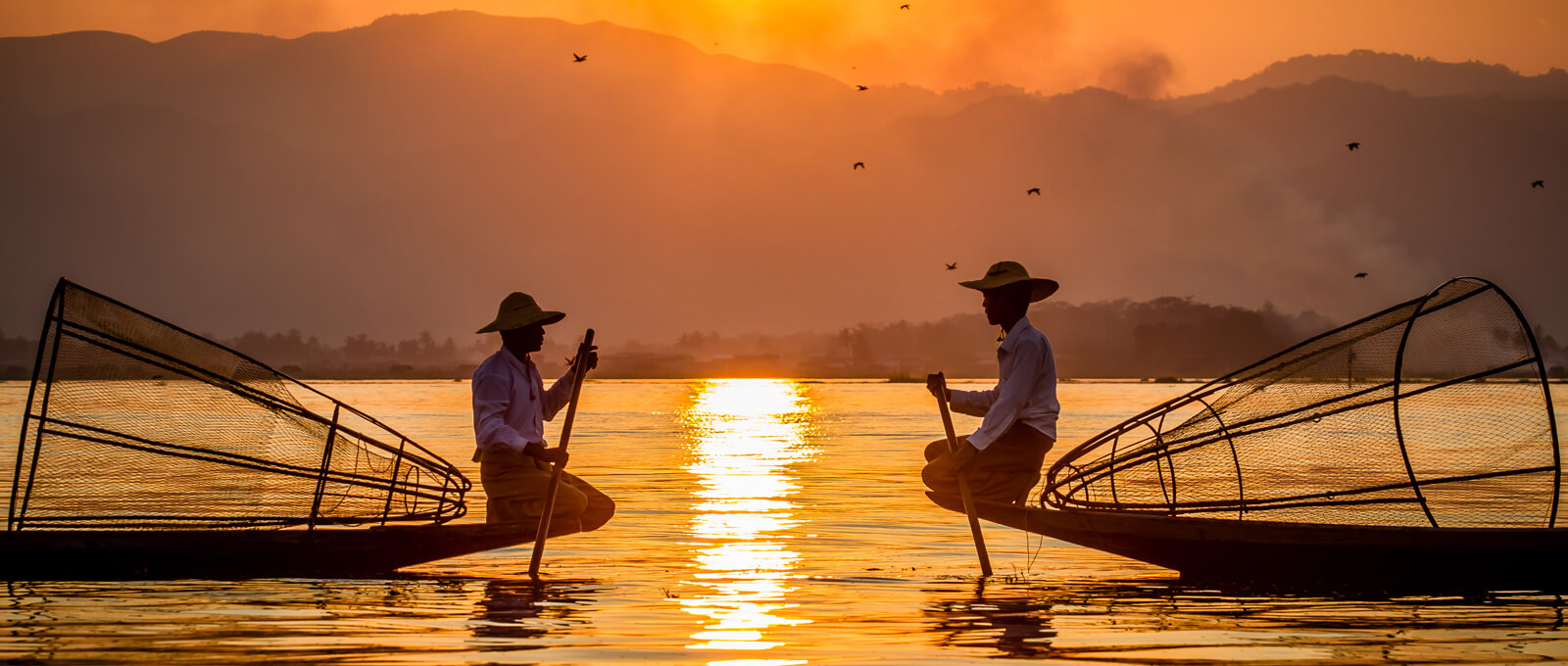
Inle Lake
Inle Lake, located in the heart of the Shan Hills, is one of Myanmar’s most enchanting destinations. Famous for its floating gardens, stilted villages, and the unique leg-rowing fishermen, the lake offers a glimpse into a way of life that has remained unchanged for centuries. Local communities cultivate vegetables and flowers directly on the water, while colorful markets and temples thrive along the shores. Visitors can explore the lake by traditional wooden boats, witnessing artisans crafting silverware, weaving silk, and preparing local delicacies. Misty mornings, calm waters, and vibrant local culture create a magical atmosphere, making Inle Lake a perfect blend of natural beauty, tradition, and serenity.

Taunggyi
Taunggyi, the lively capital of Shan State, rests high in the mountains, offering a refreshing climate and sweeping views of rolling hills. Unlike many cities in Myanmar, it feels both modern and traditional—bustling markets sit alongside serene pagodas, while quiet neighborhoods are framed by pine trees and misty ridges. The city is famous for its colorful Tazaungdaing Balloon Festival, when hot-air balloons carrying fireworks light up the night sky in a dazzling spectacle. Taunggyi also serves as a cultural hub, home to diverse ethnic groups such as Shan, Pa-O, and Intha, each adding their own traditions, cuisines, and festivals to the city’s character. With its cool weather, vibrant local life, and easy access to attractions like Inle Lake and nearby caves, Taunggyi is more than a hill station—it’s a city where nature, culture, and celebration blend together beautifully.
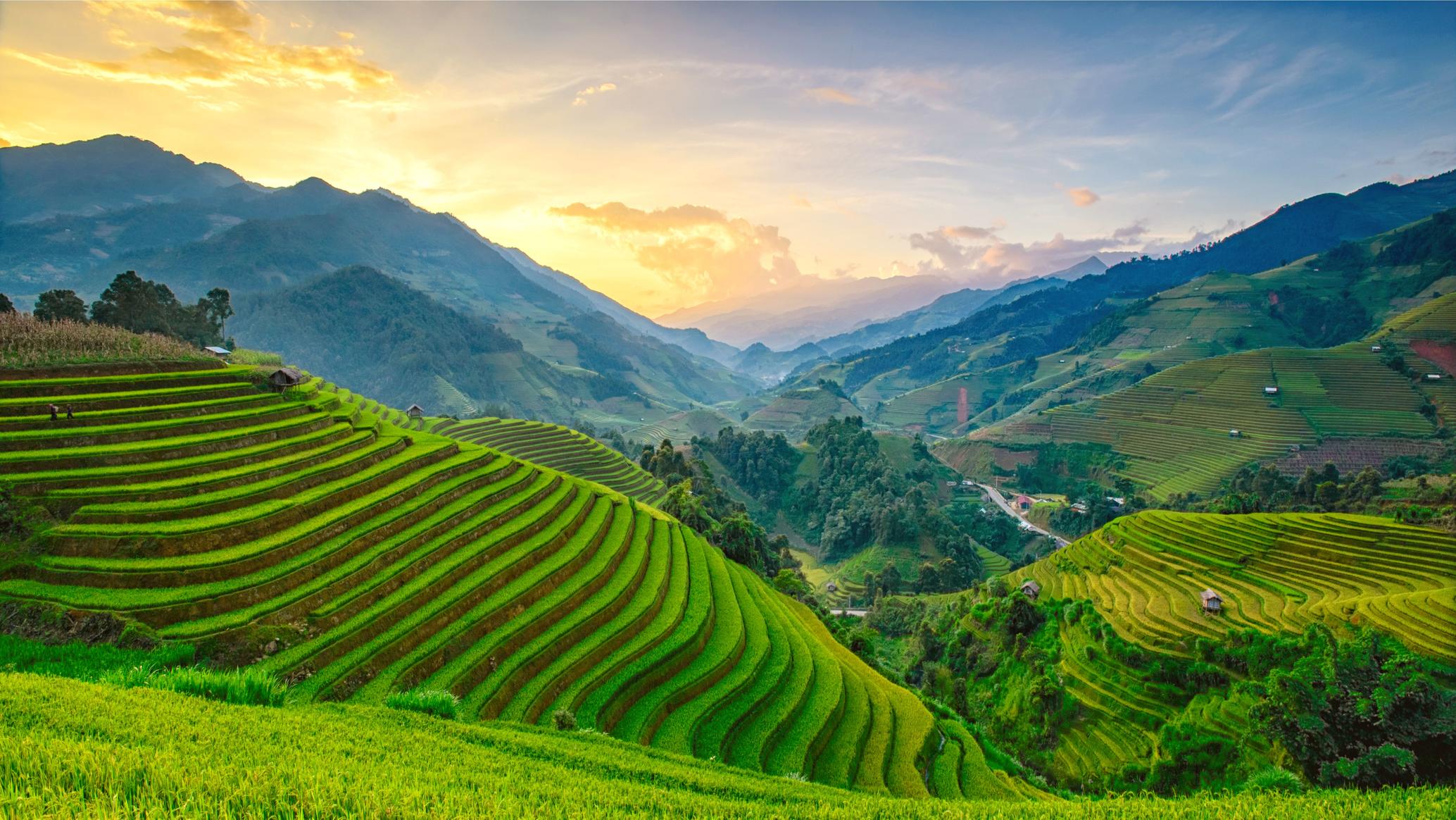
Kalaw
Kalaw, a charming hill town in Shan State, is known for its cool mountain air, pine forests, and colonial-era ambiance. Once a British hill station, the town still carries traces of old-world charm with its quaint houses, flower gardens, and quiet streets. Kalaw is especially famous as a trekking paradise travelers set out on scenic trails that wind through green hills, tea plantations, and remote ethnic villages of the Pa-O, Danu, and Taung Yo communities. The town’s lively morning market offers fresh produce and local crafts, giving visitors a taste of authentic daily life. Beyond trekking, Kalaw enchants with its peaceful monasteries, caves filled with Buddha images, and the laid-back rhythm of a town surrounded by natural beauty. Often seen as a gateway to Inle Lake, Kalaw is more than just a stopover it is a refreshing retreat where culture and nature meet in harmony.

Nyaung Shwe
Nyaung Shwe, the lively gateway to Inle Lake, is a town that beautifully blends tradition with modern charm. It is the main hub where travelers begin their journey to the famous lake, yet the town itself has much to offer. Bustling canals lined with boats, narrow streets filled with cozy guesthouses, teahouses, and colorful markets create an inviting atmosphere. Visitors can explore historic monasteries such as Yadana Man Aung Pagoda and Shwe Yan Pyay Monastery, known for its unique oval windows and red teakwood structure. The town is also home to vibrant local markets where ethnic groups like the Pa-O and Shan come to trade fresh produce, handicrafts, and traditional textiles. Cycling around Nyaung Shwe reveals hidden vineyards, peaceful countryside views, and glimpses of daily village life. With its relaxed energy, cultural richness, and convenient access to Inle, Nyaung Shwe is more than just a starting point—it is a destination worth savoring on its own.
Southeast Myanmar
Experience the unique culture and natural beauty of Myanmar's southeast
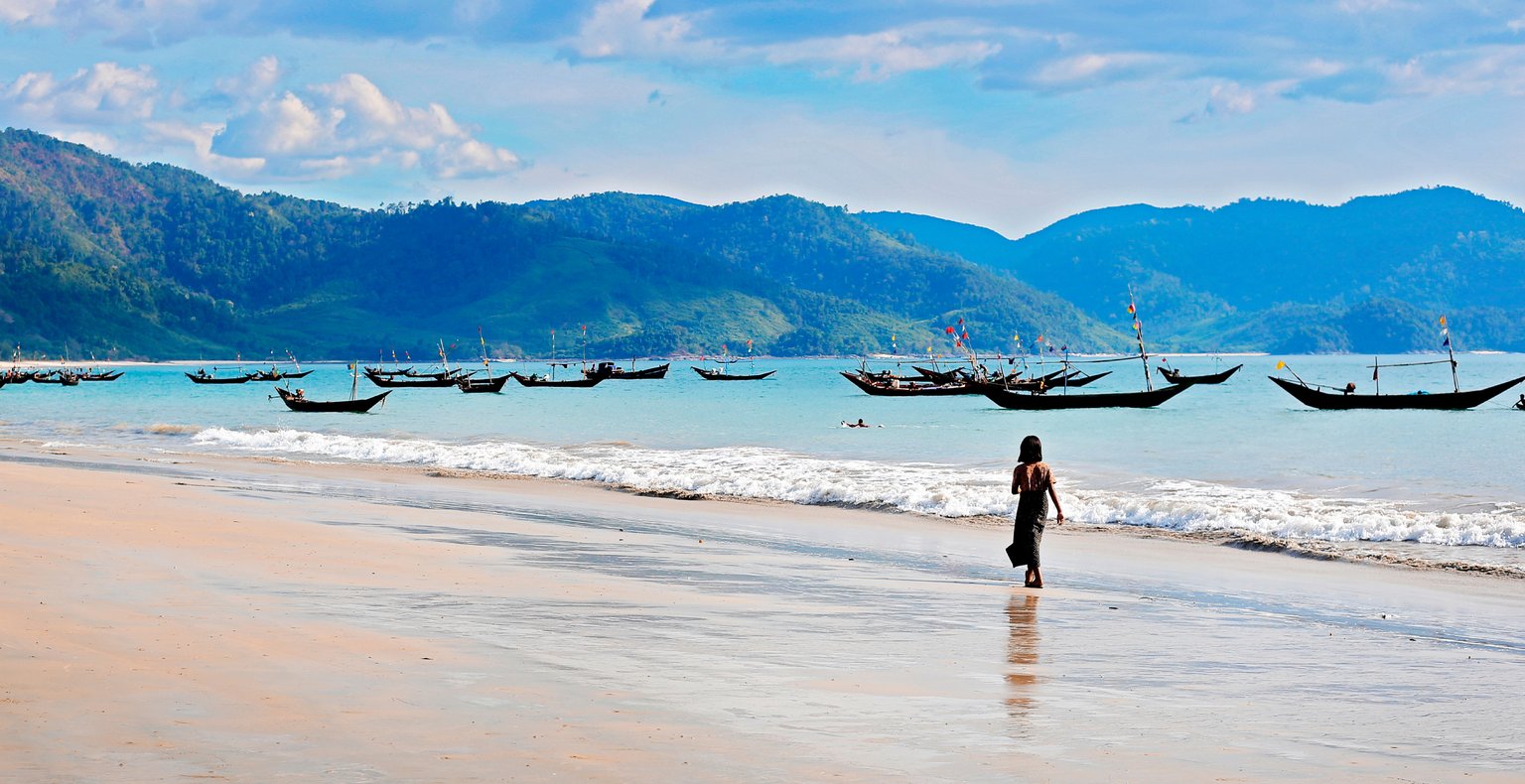
Dawei
Dawei, the southern jewel of Myanmar, is a city where time seems to slow down, offering a peaceful retreat from the hectic pace of modern life. Surrounded by emerald hills and the sparkling waters of the Andaman Sea, it is a place where natural beauty and cultural heritage coexist in harmony. The city’s streets are lined with traditional wooden houses, vibrant local markets, and ancient pagodas that tell stories of centuries past. Dawei is also famed for its golden beaches and quiet coastal villages, where fresh seafood and warm smiles welcome visitors. Whether wandering through lush landscapes, exploring hidden temples, or enjoying the serene coastline, Dawei captivates travelers with its tranquil charm and authentic Myanmar spirit.

Kawthaung
Kawthaung, Myanmar’s southernmost town, is a captivating gateway to the Andaman Sea where nature, culture, and history intertwine. Perched on the border with Thailand, the town is a lively hub of trade and travel, yet it preserves a laid-back charm that reflects the slow rhythm of life in southern Myanmar. Lush tropical forests and winding rivers embrace the town, while golden beaches and nearby islands invite travelers to explore serene coastal escapes. Its bustling markets brim with fresh seafood, local produce, and handmade crafts, giving a glimpse into the daily life and traditions of the people. Kawthaung is not just a border town—it is a place of contrasts, where vibrant human activity meets tranquil natural beauty, leaving every visitor with a lasting impression of Myanmar’s southernmost wonders.

Myeik
Myeik, often called the gateway to the Myeik Archipelago, is a coastal city in southern Myanmar where history, culture, and nature converge. The city’s streets are lined with colonial-era buildings, vibrant markets, and traditional wooden houses that echo the charm of its past. Myeik is surrounded by lush hills, winding rivers, and the turquoise waters of the Andaman Sea, offering both scenic beauty and abundant marine life. From bustling local markets filled with fresh seafood to serene coastal villages and nearby islands, Myeik is a place of contrasts—alive with energy yet effortlessly tranquil. Travelers can explore hidden temples, watch traditional fishing communities at work, or take boat trips to countless islands, each offering untouched beaches and natural splendor. Myeik captures the essence of southern Myanmar, blending culture, history, and nature into a destination full of discovery.

Hpa-An
Hpa-An, the peaceful capital of Kayin State, is a city where striking natural beauty and rich cultural heritage come together in perfect harmony. Cradled by the Thanlwin River and surrounded by towering limestone mountains, Hpa-An offers travelers a stunning backdrop of emerald hills and winding waterways. The city is scattered with ancient pagodas, vibrant local markets, and charming wooden houses that reflect its deep-rooted traditions. Iconic natural attractions like Mount Zwekabin, Sadan Cave, and Kawgun Cave reveal dramatic landscapes, hidden shrines, and centuries-old Buddhist carvings, creating a sense of wonder for every visitor. Life in Hpa-An flows at a gentle, calming pace—riverside strolls, lush rice paddies, and interactions with welcoming local communities immerse travelers in an authentic Burmese experience. From tranquil mornings along the river to breathtaking sunsets over the mountains, Hpa-An captivates all who visit, leaving an unforgettable impression of Myanmar’s serene southern heartland.
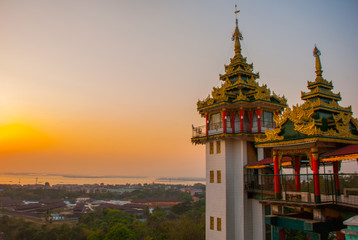
Mawlamyaing
Mawlamyaing, the charming capital of Mon State, is a riverside city that beautifully weaves together history, culture, and natural scenery. Once an important colonial trading port, the city still preserves its heritage in the form of old churches, mosques, and colonial-era buildings that line its streets, standing gracefully alongside bustling markets and gilded pagodas. Set against the backdrop of the Thanlwin River and rolling green hills, Mawlamyaing is renowned for its breathtaking sunsets—scenes so captivating they inspired poets and writers like Rudyard Kipling. Beyond its urban charm, the city serves as a gateway to unique experiences such as exploring limestone caves filled with Buddha images, visiting quiet islands scattered along the river, and discovering Mon traditions that have shaped the region for centuries. With its blend of cultural diversity, historical significance, and stunning natural landscapes, Mawlamyaing offers travelers a journey into the timeless spirit of southern Myanmar.
Beach Destinations
Relax on pristine beaches and enjoy the coastal beauty of Myanmar

Ngapali Beach
Ngapali Beach is Myanmar’s premier coastal retreat, boasting powdery white sands, crystal-clear waters, and swaying coconut palms. The area is perfect for relaxation, water sports, and fresh seafood feasts. Local fishing villages and vibrant sunsets add to the charm of this idyllic beach destination.
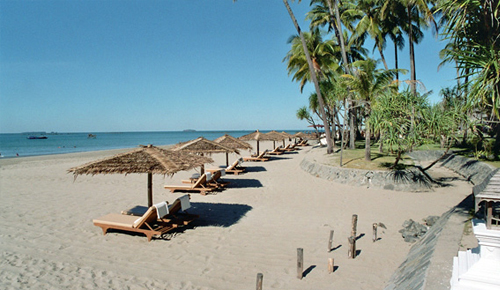
Ngwe Saung
Ngwe Saung is a serene beach town along the Bay of Bengal, known for its long stretches of white sand and clear turquoise waters. It offers a peaceful escape with opportunities for island hopping, snorkeling, and sunset watching. The laid-back vibe and natural beauty make it a favorite among travelers seeking relaxation.

Chaung Tha
Chaung Tha is a lively beach resort town popular with locals and visitors alike. It features golden sands, gentle waves, and a relaxed, friendly atmosphere. The town is dotted with fishing villages, local markets, and offers a range of water activities for all ages.